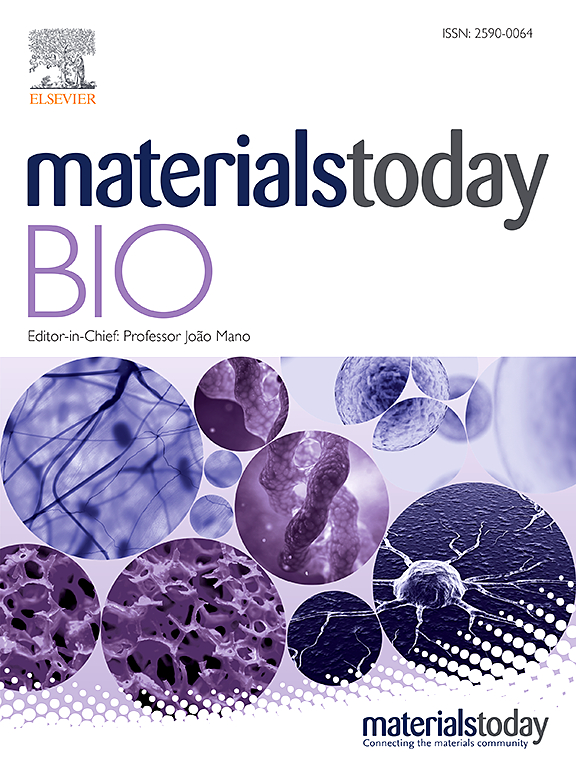Astragalin-functionalized ultrasmall nanoparticles modulate the complement pathway to inhibit microglial synaptic phagocytosis for reducing anesthetic neurotoxicity
IF 8.7
1区 医学
Q1 ENGINEERING, BIOMEDICAL
引用次数: 0
Abstract
Synaptic impairment is identified as a primary pathology in sevoflurane-induced neurotoxicity, contributing to neurobehavioral and neurodevelopmental deficits. Synaptic loss in neurons occurs through microglia-mediated synaptic phagocytosis via the complement pathway. Astragalin, a natural flavonoid compound, exhibits diverse bioactivities, such as anti-tumor, anti-complement, and anti-inflammatory effects. Herein, astragalin-functionalized Cu2-xSe nanoparticles (CSPA NPs) can effectively inhibit the complement pathway, mitigating microglia-mediated synaptic phagocytosis and promoting synaptic restoration to repair sevoflurane-induced neurotoxicity. They efficiently target and reduce microglial activation and phagocytosis. By downregulating sortilin, CSPA NPs increase progranulin expression, promoting TFEB cytoplasmic translocation to decrease lysosomal activity and microglial phagocytosis. Furthermore, CSPA NPs decrease complement C1q and C3 levels, inhibiting microglial synaptic engulfment and ameliorating cognition dysfunction in sevoflurane-treated mice. This study illustrates that CSPA NPs inhibit microglial synaptic elimination via the complement pathway, alleviating sevoflurane-induced neurotoxicity and providing insights into treating complement pathway-related diseases.

求助全文
约1分钟内获得全文
求助全文
来源期刊

Materials Today Bio
Multiple-
CiteScore
8.30
自引率
4.90%
发文量
303
审稿时长
30 days
期刊介绍:
Materials Today Bio is a multidisciplinary journal that specializes in the intersection between biology and materials science, chemistry, physics, engineering, and medicine. It covers various aspects such as the design and assembly of new structures, their interaction with biological systems, functionalization, bioimaging, therapies, and diagnostics in healthcare. The journal aims to showcase the most significant advancements and discoveries in this field. As part of the Materials Today family, Materials Today Bio provides rigorous peer review, quick decision-making, and high visibility for authors. It is indexed in Scopus, PubMed Central, Emerging Sources, Citation Index (ESCI), and Directory of Open Access Journals (DOAJ).
 求助内容:
求助内容: 应助结果提醒方式:
应助结果提醒方式:


